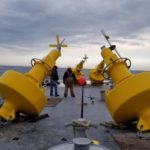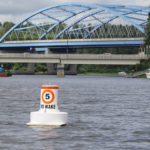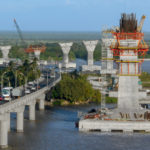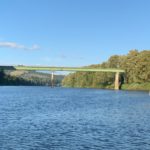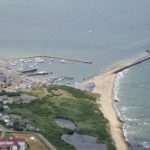Americas: +1 603 737 1310

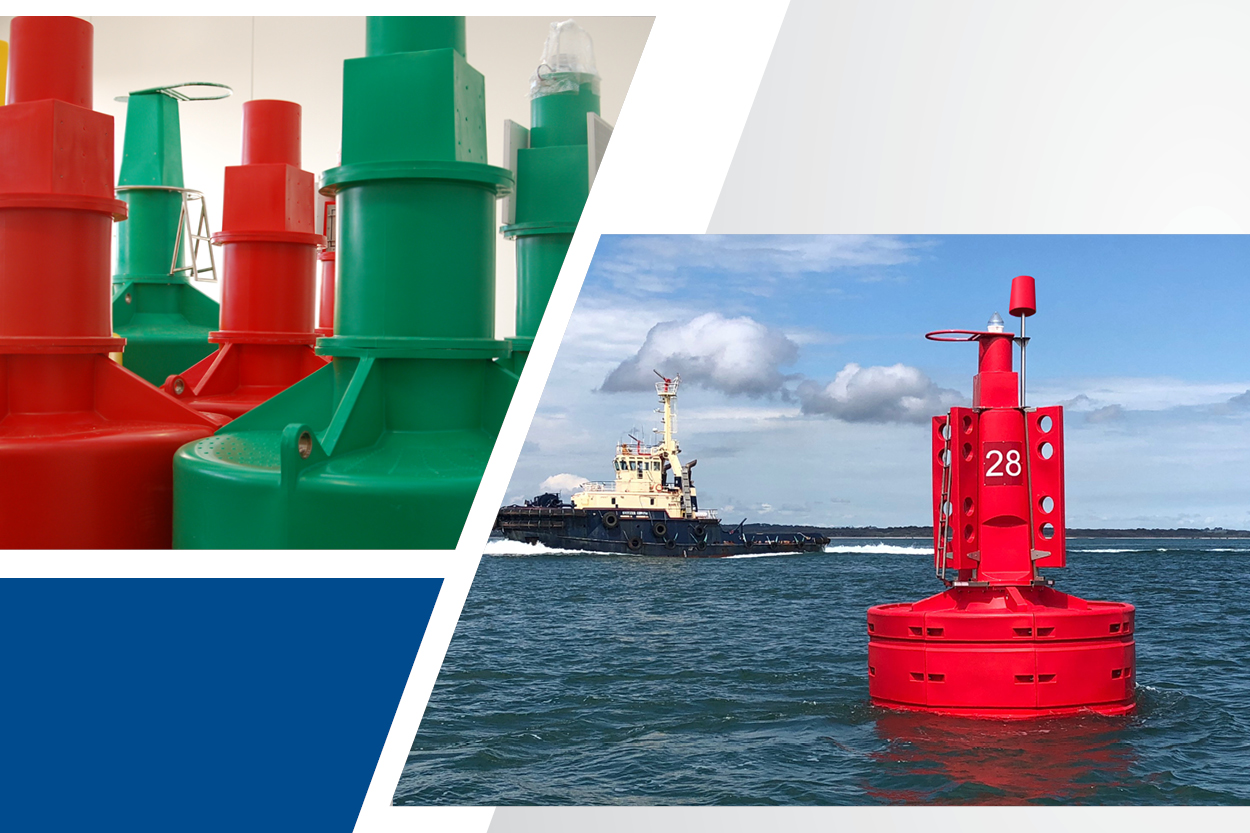
WHITE PAPER: Benefits of Polyethylene Buoys in Harsh Conditions
By: |
February 20, 2020
DOWNLOADS
> White Paper | ENGLISH
> White Paper | CANADIAN FRENCH
Benefits of Twin Keel Design Over Traditional Tail Tube Designed Buoys
The free-standing design of twin keel buoys provides natural stability on deck of vessel resulting in:
- Simplified tie-down requirements for securing buoys
- Reduced time spent in loading and securing then unloading the buoys
- Reduced deck space required for a given size and quantity of buoys
- Reduced shipping space allows use of a smaller vessel or fewer trips for deployment
- Increased free deck space for safety of personnel, and
- Enhanced safety as buoys are less likely to roll
Twin keel design allows a buoy to stand on a flat surface, also
- The combination of twin keels and mooring bridle provide superior directional stability in fast water, and
- Installed equipment can be kept upright during assembly, transport and deployment phases
Modular free-standing design with principal components moulded from polyethylene and with all exposed structural elements made from Grade 316 Stainless Steel:
- Modular design allows for ease and flexibility in replacing or exchanging components at sea. This also allows reconfiguring of buoys e.g. Changes to Focal Plane Height, addition of day marks or upgrades to solar power
- Where draft is a concern, draft is further minimized by the absence of protruding tail pipe
- Proximity of the mooring point to the submerged area of the float results in a reduced effect of mooring load on healing angle
- Reduced maintenance as all steel components which are directly exposed to the environment are made from 316 grade stainless steel
- Sealite’s manufacturing processes are closely controlled to ensure full interchangeability of buoy components. This simplifies repair or changes to buoy configuration.
Polyethylene Buoys
Sealite manufactures their marine buoys on-site with state-of-the-art Rotational Moulding equipment using UV-stabilised polyethylene. Polyethylene is one of the most common plastics used today and due to it’s light weight, strength and versatility it is used to make bottles, toys and even bulletproof vests.
Sealite uses a Hexene co-polymer based Linear Low-Density Polyethylene resin (LLDPE) which is specifically designed for rotational moulding applications. LLDPE has a higher tensile strength and exhibits greater impact and puncture resistance compared to some other plastics. It has been chosen as the material for Sealite marine buoys because of its high Environmental Stress Cracking Resistance (ESCR), toughness, flexibility and minimal impact on the environment.
Why use Virgin Polyethylene?
- Polyethylene float and tower components never require painting, ever
- Reduced weight of Polyethylene buoys also supports the use of a smaller vessel with reduced lifting capacities
- With reduced buoy weight comes a lower centre of gravity with improved static stability and reduced draft resulting in reduced water loads and increased visibility above water when achieving like focal plane heights
- Reduced mass and therefore inertias means that buoys have shorter natural periods. This reduces the effect of long period wave motion on buoys.
Surviving Harsh Climates
Marine buoys need to be able to survive some of the harshest conditions known. Sealite’s buoys are built to withstand extreme elements of icing, cyclonic winds, salt-spray, prolonged UV exposure and tropical humidity. The LLDPE compounds used to manufacture Sealite’s buoys have been especially developed to survive harsh environments and the destructive effects of the sun’s ultra violet rays. By using UV-stabilised polyethylene, the marine buoys are given additional protection from the long-term degradation effects of UV exposure.
Rotational moulding of polyethylene allows Sealite to manufacture complex shapes which are moulded in one piece making a robust product with excellent impact strength. In the unlikely event of damage, the buoys can be easily repaired.
Minimal Maintenance
Sealite’s polyethylene buoys require minimal maintenance. The buoys never require painting because they are manufactured using coloured pigments which permeate all of the way through the polyethylene. Because the buoys do not require painting on station, if suitable vessels are available, maintenance can be carried out at sea to remove marine growth making maintenance easier and more economical.
Closed-cell Polyurethane Foam
Many of Sealite’s marine buoys come with closed-cell polyurethane foam as standard or as an optional extra.
Foams are made up of a mass of air bubbles and are classified as open-cell or closed-cell. In open-cell foam the individual cells are interconnected, whereas in closed-cell foam each cell is completely enclosed by a thin membrane of polyethylene, are packed close together and will not compress or settle over time.
Some of the advantages of choosing buoys filled with closed-cell polyurethane foam are
- Increased wall strength in the event of impact
- Excellent buoyancy characteristics because each cell acts as an individual ‘float’
- Acts as a water restrictive barrier preventing the buoy acting like a sponge
- The buoy will not become punctured or waterlogged
- Resists attack from bacteria, fungus and algae
- Lightweight
Eco Friendly
The increasing awareness of the need to protect our environment for future generations has lead to more and more consumers demanding environmentally friendly products. Innovations and advances in technology used by the plastics industry are helping Sealite to contribute to a more sustainable world.
Many pigments used in the production of other polyethylene products are made from heavy metals such as Lead, Cadmium and Chromium which, even in small concentrations, are toxic to humans and the environment. There have even been links between heavy metals and a range of health issues such as cancer, kidney disease and learning disabilities.
Even though there are not always regulations in place in some regions restricting the use of heavy metals in pigments, Sealite has made the decision to only use polyethylene which is heavy metal free and contains absolutely no toxic chemicals. By making this choice, Sealite is making a difference and contributing to a safer environment by reducing the risk of air and water pollution throughout their roto-moulding process.
At the end of their working life products that contain heavy metals cannot be recycled and, even if there are only traces of toxic heavy metals, the used product cannot be burnt for heat recovery, reprocessed or even buried!
Sealite buoy products are made from recyclable materials and it is recommended that they be recycled at the end of their working life. As a service to customers, individual components and products at the end of their service life may be returned to Sealite for safe and responsible recycling.
Sealite Case Studies
Got Any Questions?
Contact UsContact Us
Sealite International: +61 (0)3 5977 6128
Sealite USA/Canada: +1 (603) 737 1311
Sealite UK: +44 (0)1502 588026
Sealite Asia: +65 6908 2917
Call Us
Asia call: +65 6908 2917
Email: sealite_info@spx.com
Current Time in Singapore:
Current Time in Singapore:
© 2025 All rights reserved | Privacy Policy | UK Slavery Act Statement





